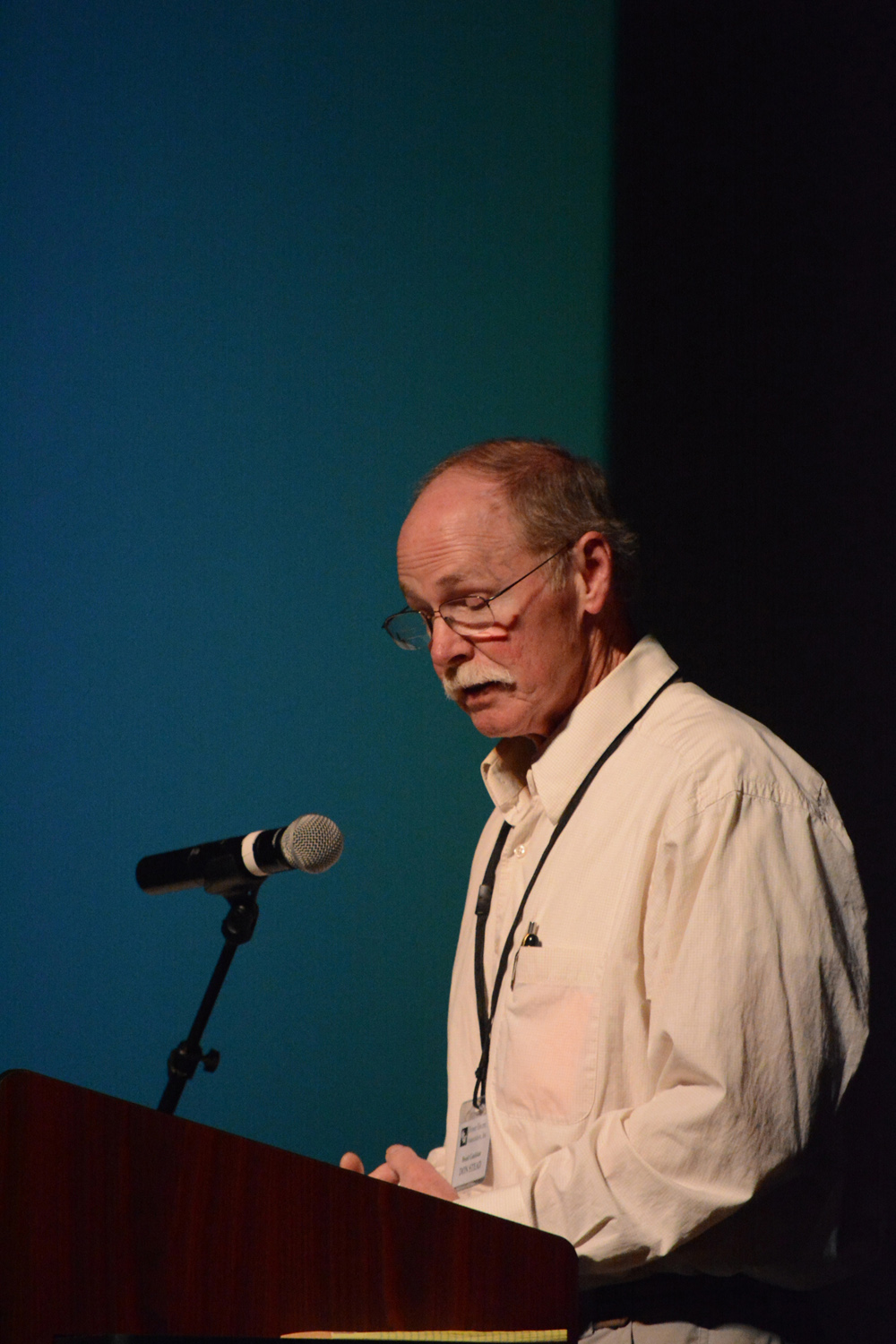Homer Electric Association customers should see rates stabilize in the near future, general manager Bradley Janorschke said at HEA’s annual meeting last Thursday in Homer High School’s Mariner Theatre.
“The good news is I honestly think things are stabilized,” he said at a presentation at the business meeting. “I think we’re about as high as we’re going to get.”
On April 1, HEA raised its cost-of-power adjustment, or COPA, from 6.9 to 7.8 cents per kilowatt-hour. Its base rate for residential service changed May 7 from 13.78 to 14.88 cents per kwh. The current blended (the base rate and COPA) rate is $22.72 cents a kwh, up from 20.68 cents, about a $13 a month increase in the average monthly bill.
Despite the increase, Janorschke said HEA’s base-rate change of 8 percent is less than proposed rate increases of 23 percent for Chugach Electric Association and 21 percent for Municipal Light and Power, both Anchorage utilities.
About 250 people attended the annual meeting, which included a free meal, booths on energy conservation, presentations of awards for safety poster contests and scholarships, and elections for board of directors.
In the lower Kenai Peninsula area of District 3, incumbent Jim Levine, a strong advocate of renewable energy, lost to challenger Don Stead. Stead advocated more stable rates, he said in his campaign speech to the members. Joe Singleton came in third.
In District 1, Kenai-Nikiski, incumbent David Thomas ran uncontested and was re-elected, and in wDistrict 2, Soldotna-Sterling-Kasilof, incumbent Dave Carey also won re-election against challenger Andrew Alexandrou.
Janorschke said several factors have driven rate increases:
• Declining energy sales due to conservation and mild winters,
• Higher fuel costs and
• Regulatory burdens.
HEA has fixed costs like operations and maintenance that have to be accounted for aside from energy production, Janorschke said. For example, just as consumers pay a monthly customer fee whether they use power or not, HEA has to pay a fee of $30,000 a month to hook up to a natural gas pipeline.
Gas producers propose raising that fee to $90,000 a month, Janorschke said.
Fuel cost $33 million in HEA’s 2014 budget, he said. HEA pays $7.50 per million Btu compared to a cost of $2.68 per mmBtu in the Midwest.
“If we could buy gas for that here, your bills would go down $30 a month,” Janorschke said.
Looking ahead to cut rates, HEA has secured fuel for the second quarter of 2016 at a lower rate, Janorschke said. HEA will release details of that deal soon, he said.
HEA manages the Bradley Lake Hydroelectric Plant owned by the Alaska Energy Authority. HEA gets 12 percent of its power from Bradley Lake. The rest of the power goes north, partly on HEA transmission lines.
Called “wheeling,” that’s the cost to HEA of sending other utilities’ power on HEA equipment. Right now, HEA gets $300,000 of the $2.7 million wheeling cost. HEA has filed with the Regulatory Commission of Alaska to increase the wheeling charge to $2.2 million.
“You’re using our member system,” Janorschke said about the wheeling cost that should be paid by other utilities. “You should pay for it.”
Last year marked the first year HEA generated all its own power after an agreement to purchase some power from Chugach Electric expired on Dec. 31, 2013. HEA also gets power from its Nikiski plant, including energy from a steam turbine that produces 18 megawatts without using more natural gas. HEA also gets power from the Soldotna Generation Plant and the Bernice Lake Generation Plant.
HEA also is looking into producing more renewable energy, including tidal energy and a proposed hydroelectric plant at Grant Lake near Moose Pass. HEA will file its final license application for the Grant Lake project with the Federal Energy Regulatory Commission this year.
The Grant Lake facility, installed on the Grant lake watershed near Moose Pass, would consist of 5 megawatts of installed capacity with an average annual output of 19,500 megawatt hours of energy.
Another possible energy project would be to recover methane produced by decomposition of organic material at the Kenai Peninsula Borough landfill in Soldotna.
“I could talk all night about renewables,” Janorschke said.
In response to a question from a member about purchasing power from Cook Inlet Region Inc.’s wind turbines on Fire Island near Anchorage, Janorschke said HEA won’t do that.
“I’m a big fan of renewables, but it’s got to make economic sense,” he said.
Janorschke circled back around to the question of stabilizing or lowering rates when a member asked about the outlook for rates over the next two years. He said the base rate will stay flat until at least January 2017.
“We have plateaued,” he said. “I think there’s a strong trend downward.”
Michael Armstrong can be reached at michael.armstrong@homernews.com.


